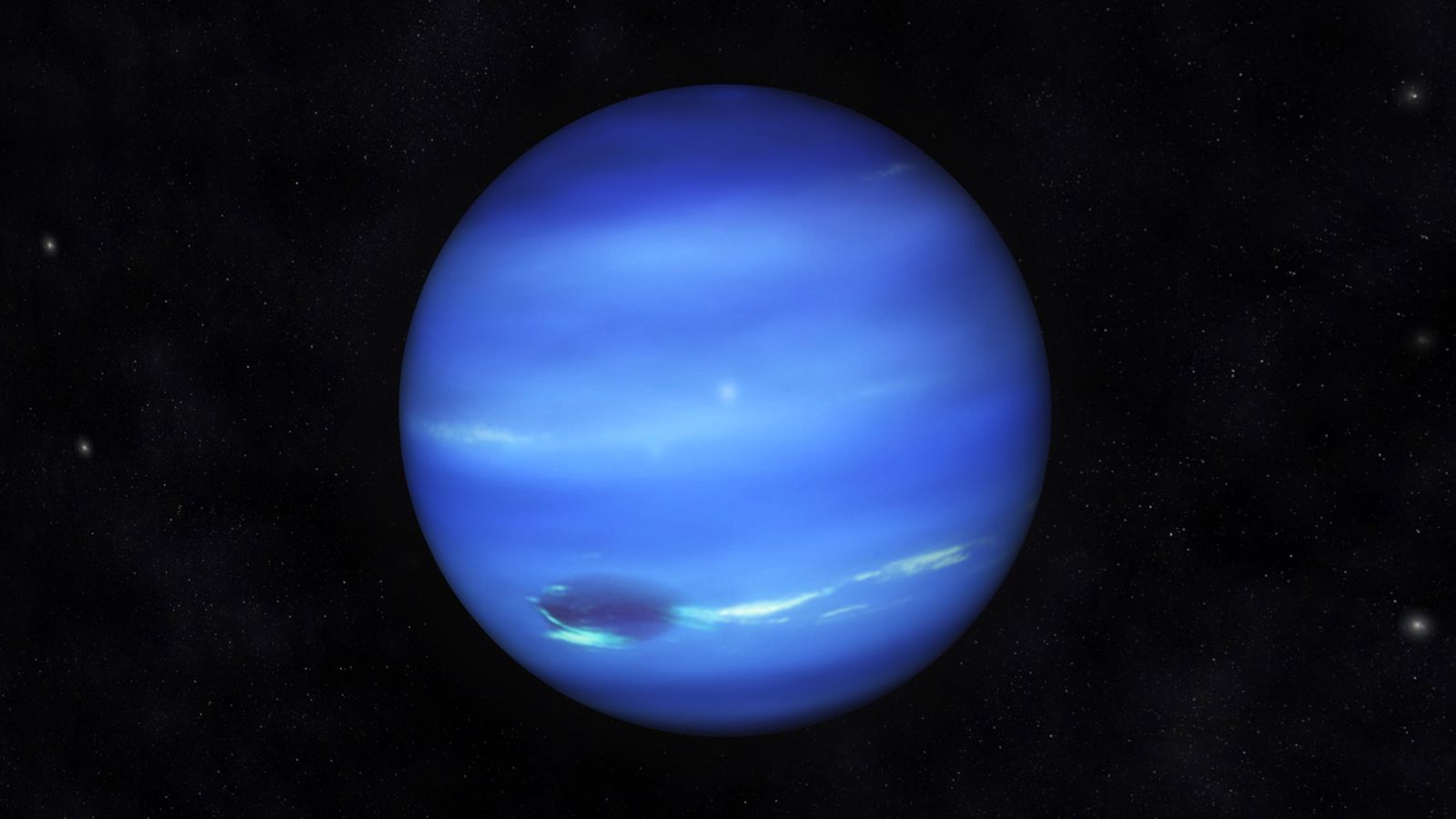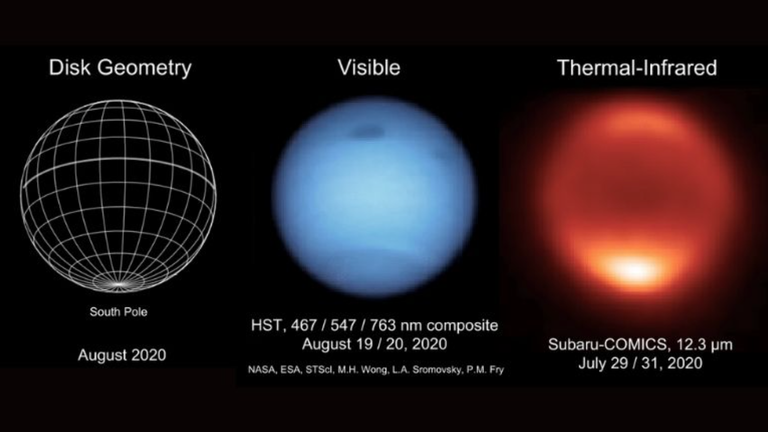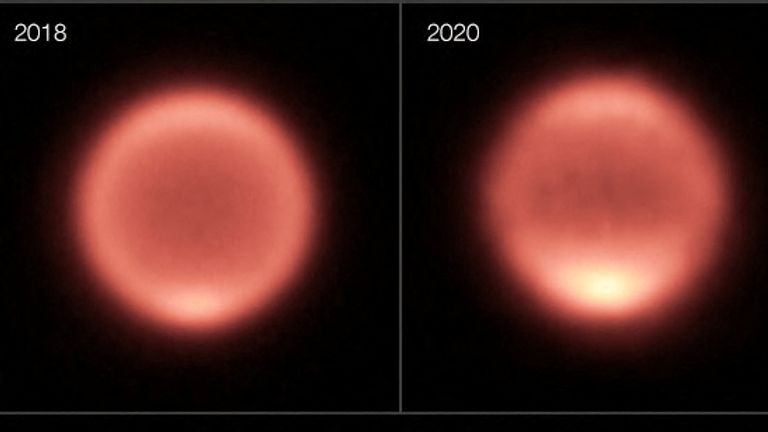Astronomers from the University of Leicester have discovered mysterious changes in the temperature of ice giant Neptune, the solar system’s most distant planet.
Based on observations covering the past 17 years the scientists detected a consistent drop in the planet’s temperature which has suddenly been interrupted by dramatic warming at its south pole.
Thermal-infrared images taken between 2003 and 2018 show the planet cooling by about eight degrees Celsius – until, at the end of that cycle, the temperature at its south pole shot up by about 11 degrees Celsius.
Neptune’s atmosphere makes it a baffling planet in many ways. A few years ago scientists spotted a curious dark storm there abruptly reversing its direction, something that had never been observed before.
It is a very different planet to its interior gas giant neighbour Uranus, which has no obvious weather patterns at all.
“This change was unexpected,” said lead study author Dr Michael Roman, a postdoctoral research associate at the University of Leicester, on the new temperature discoveries.
“Since we have been observing Neptune during its early southern summer, we expected temperatures to be slowly growing warmer, not colder.”
Neptune is roughly 17 times larger than Earth, but its distance from the sun and axial tilt means a single year on Neptune takes more than 165 years on Earth, and its seasons last four decades each.
The data the team collected covered “less than half of a Neptune season,” according to Dr Glenn Orton, one of the study’s co-authors, “so no one was expecting to see large and rapid changes”.
The cause of these unexpected temperature changes is currently unknown.
Dr Roman continued: “Temperature variations may be related to seasonal changes in Neptune’s atmospheric chemistry, which can alter how effectively the atmosphere cools.
“But random variability in weather patterns or even a response to the 11-year solar activity cycle may also have an effect,” he added.
The 11-year solar cycle – which is marked by periodic variation in the sun’s activity and sunspots – has been previously suggested to affect Neptune’s visible brightness.
The new study, published in the Planetary Science Journal, reveals a tentative, correlation between the solar activity, stratospheric temperatures, and the number of bright clouds seen on Neptune.



